BOXES - Archive
Studying maps, those rational human representations of our mutable planet, can be most comforting. At our leisure and without effort, we are free in our mind's eye to take control, travel and dream.
These beguiling diagrams are used by John to create vignettes in which something more elemental and dangerous is happening. Across these maps flocks of tiny, vulnerable birds huddle together to journey over the vastness of the earth. We are reminded of the miracle of a migration which these innocents are compelled to repeat again and again.
High on a single branch, a lone nightingale sings into an eerie, empty night. The bird is witness to the remains of a human scene below, the events of which we can only speculate on, the atmosphere heavy with loss and yearning.
On the edge of a wood the old, knowing gaze of owls and other birds discomfort us. They seem to reign supreme in the dark, menacing wood that humans fear but whose mystery draws us in. In one of these woods, a strange phenomenon is taking place as a flock of woodpeckers efficiently set to work on an important looking tome of human knowledge.
These are some of the scenes to be found in John's art works. Our human need to catalogue and contain nature is again undermined in his moth boxes. Inspired by a visit to Brighton's Booth Museum and its collection of Victorian moth cases, John wondered what would happen if the moths were to come back to life, break free from their pins and scramble to get out of their boxes. The resulting pieces are as obsessive as those of the original Victorian lepidopterists.
In Bad Apples, John revisits childhood memories of playing amongst the apple trees in his grandparents Kent garden, and of sorting out the good apples from the bad for winter storage.
In this most recent work, rows of diseased "bad" apples are neatly arranged on shelves and labelled, the real names of which conjure up an England of recent but fading memory.
Although at first the piece suggests a nostalgic feeling for a lost Eden, both personal and more general, closer inspection reveals a more ambiguous intention. The artist has relished recreating these rotting fruits and in so doing subverts the idea that decay is "bad". As a result, Bad Apples becomes a humorous and liberating musing on the inevitability of mortality and mutation.
With a witty sleight of hand and beautiful crafting, John creates a distance from which to safely view the fragility of existence. The presence of mankind is evident in its need to understand and control nature but the actual lack of human form suggests that John may view our importance in the scheme of things as cursory. There is no doubting that John reveres nature's unsentimental, resilient, beautiful mystery. In these small, visually poetic box worlds a bigger truth is both captured and contained.
Belen Gomez
Here are just a few of the box works that I have made in the past.
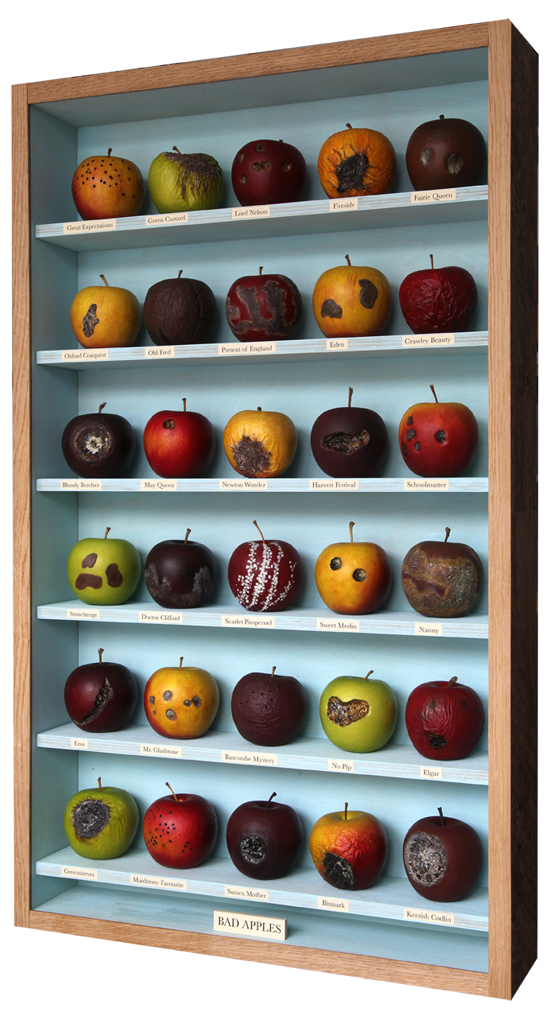
Bad Apples 2010 48x80x10cm.
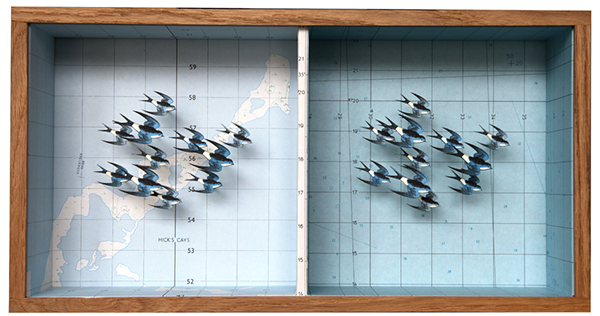
Somewhere and Nowhere
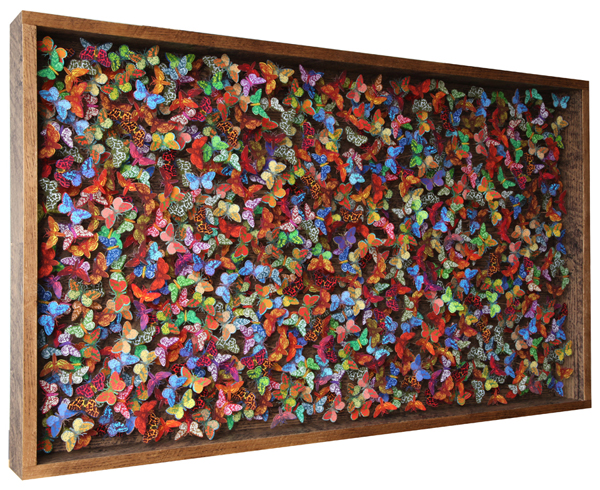
Moth Collection 2010 110x65x8cm
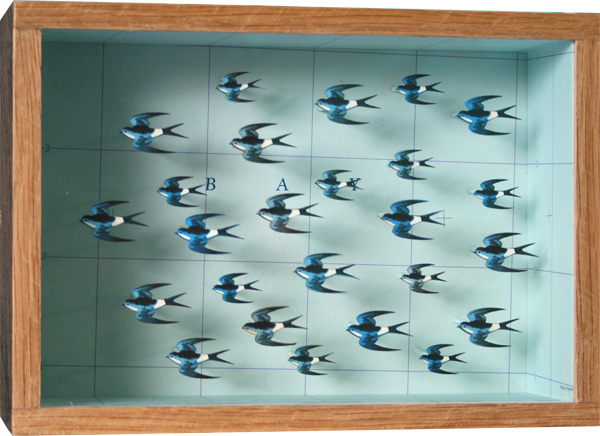
Over the Bay
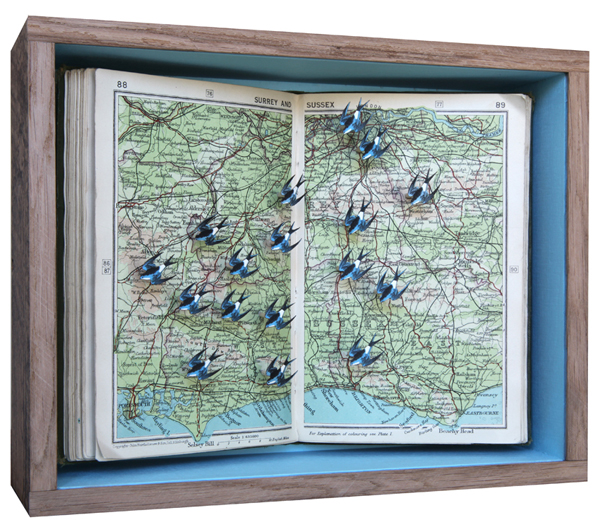
Pocket Atlas-Heading South 2010 23x18x7cm.
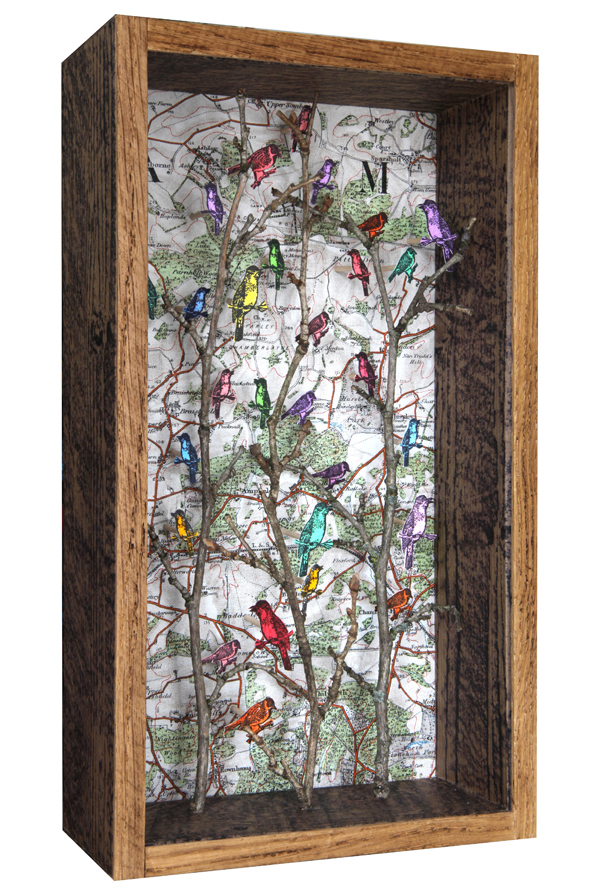
Little Birds
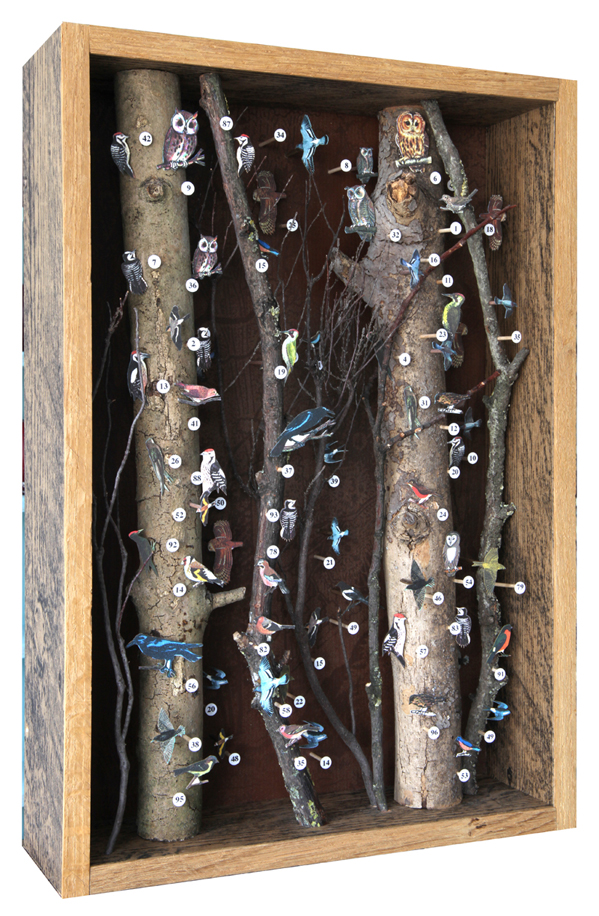 Into the Wood 2010 28x40x8.5cm
Into the Wood 2010 28x40x8.5cm
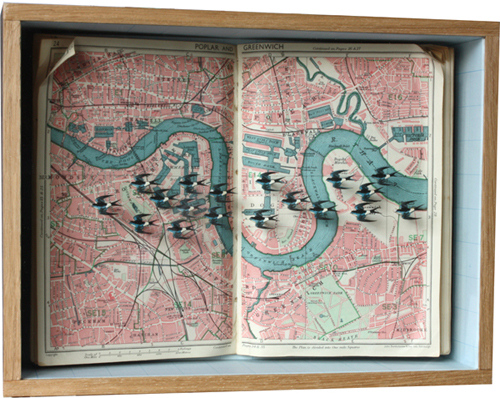
Over the Thames 28x21x7cm.

Night (detail) 2010 50x35x9cm
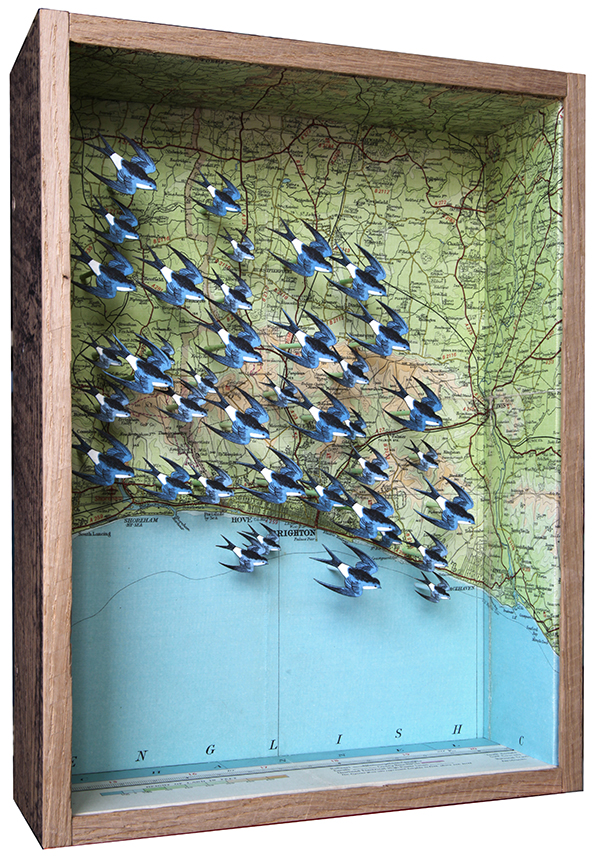
High Over Brighton 2012
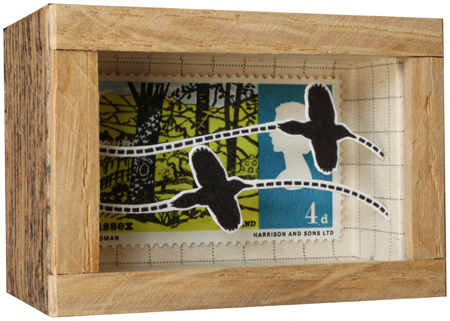
Woodpeckers in Flight, Sussex, England 2010 5.4X3.7x3cm
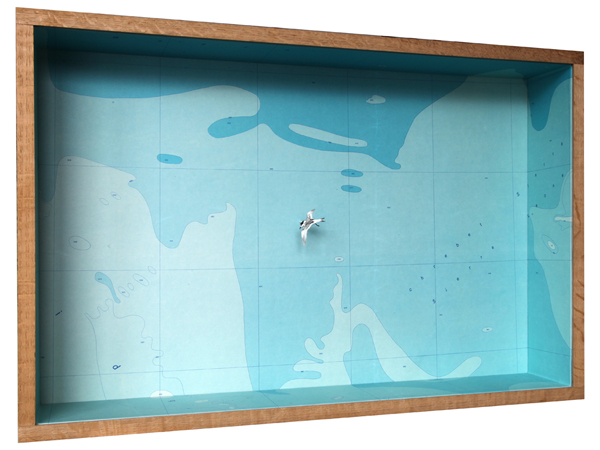
In the Middle of Nowhere 2010
49x32x8.5 cm
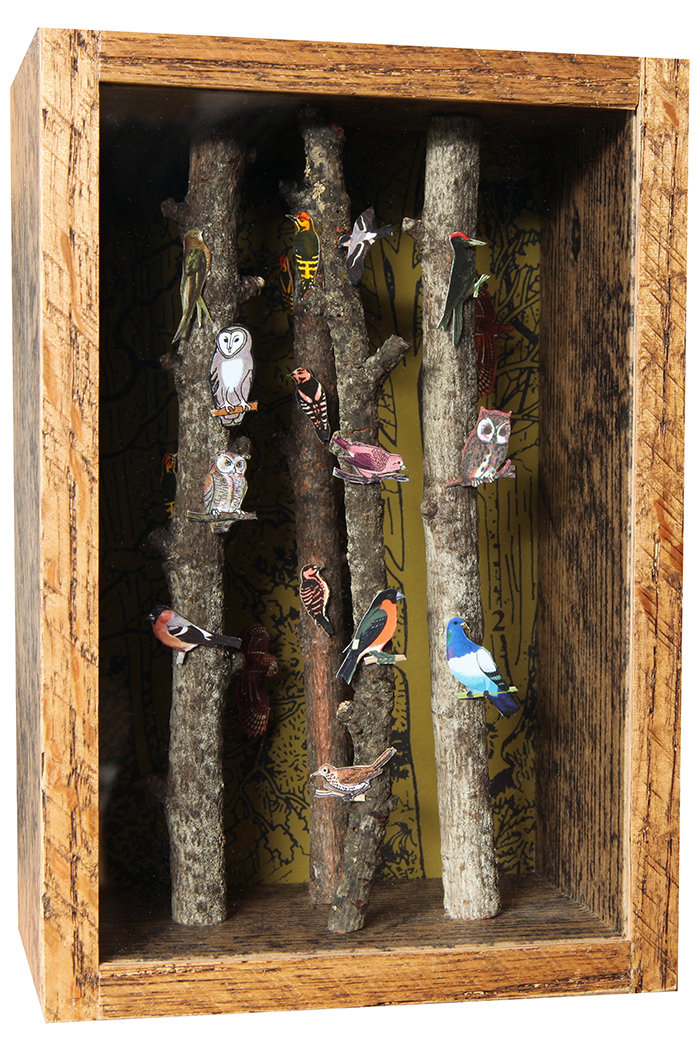
The Owl Wood 2015
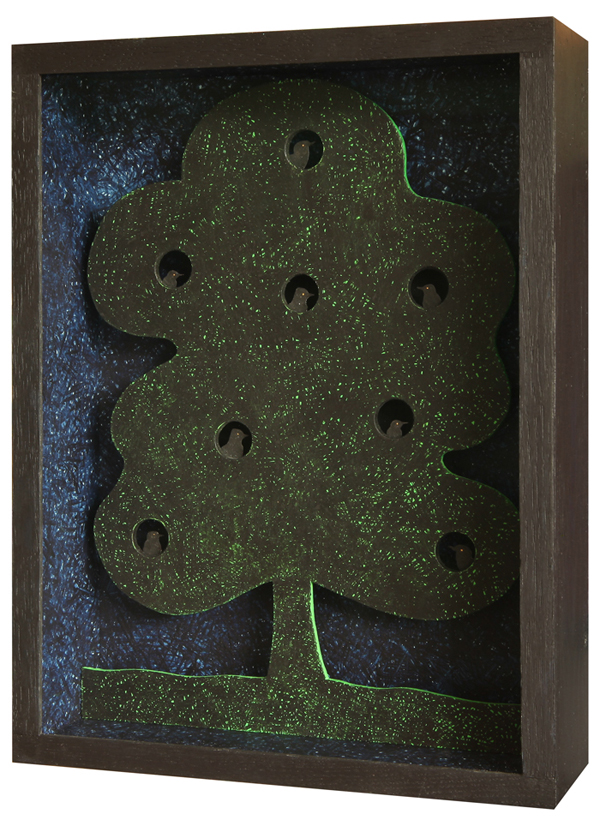
Night Tree 2019 28x21x7cm
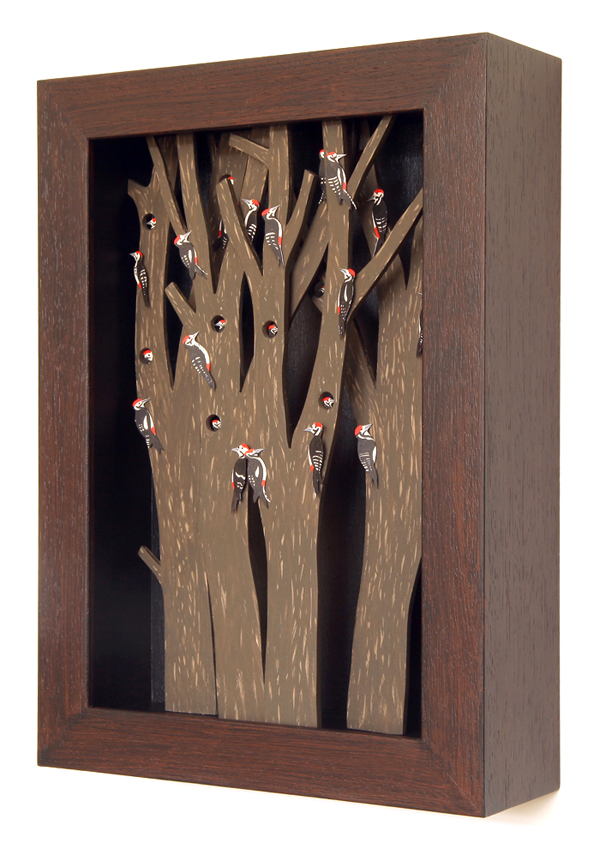
Woodpecker Wood 2019 23x32x7cm
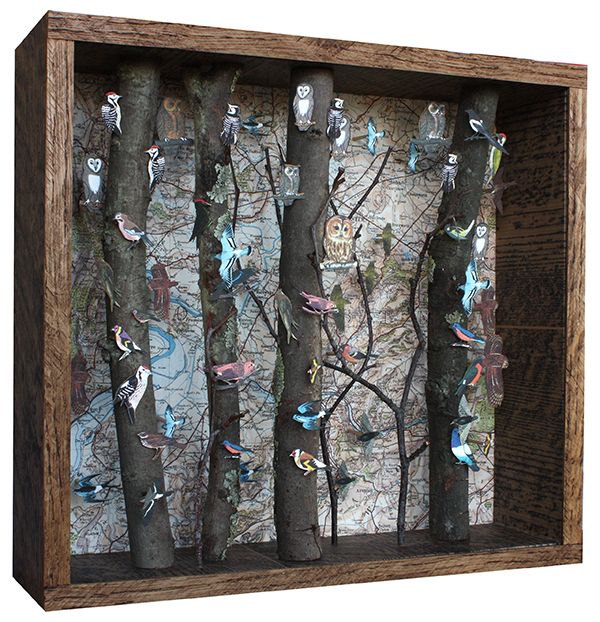
Over the Severn 2010
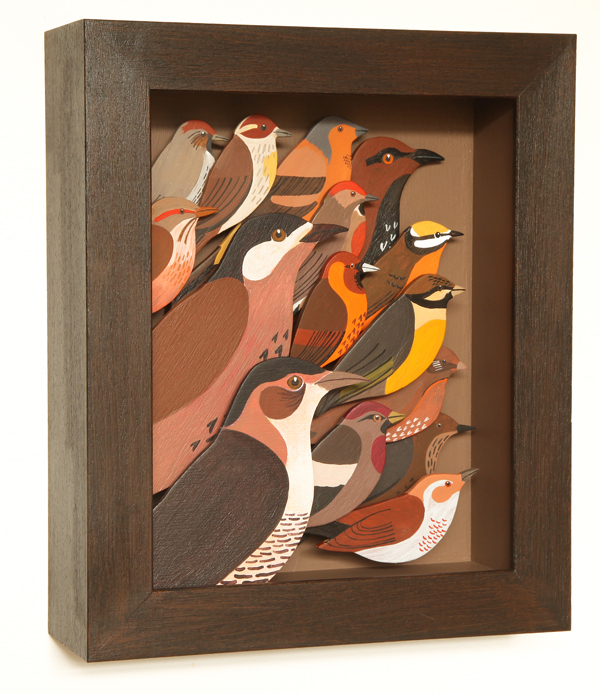
Little Brown Birds 2019 23x27.5x7 cm
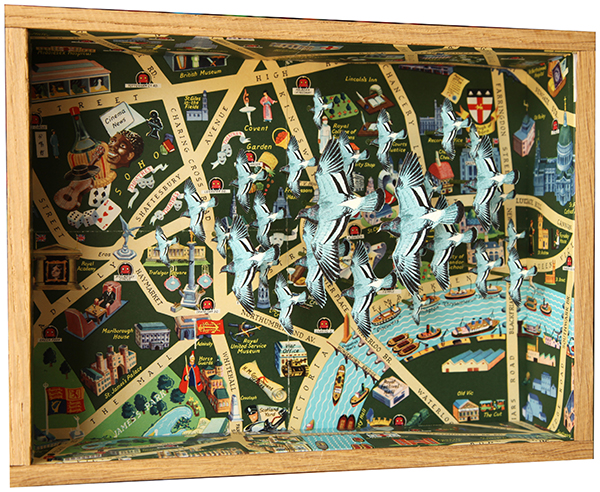
Over Trafalgar Square 2010
© John Dilnot 2024
